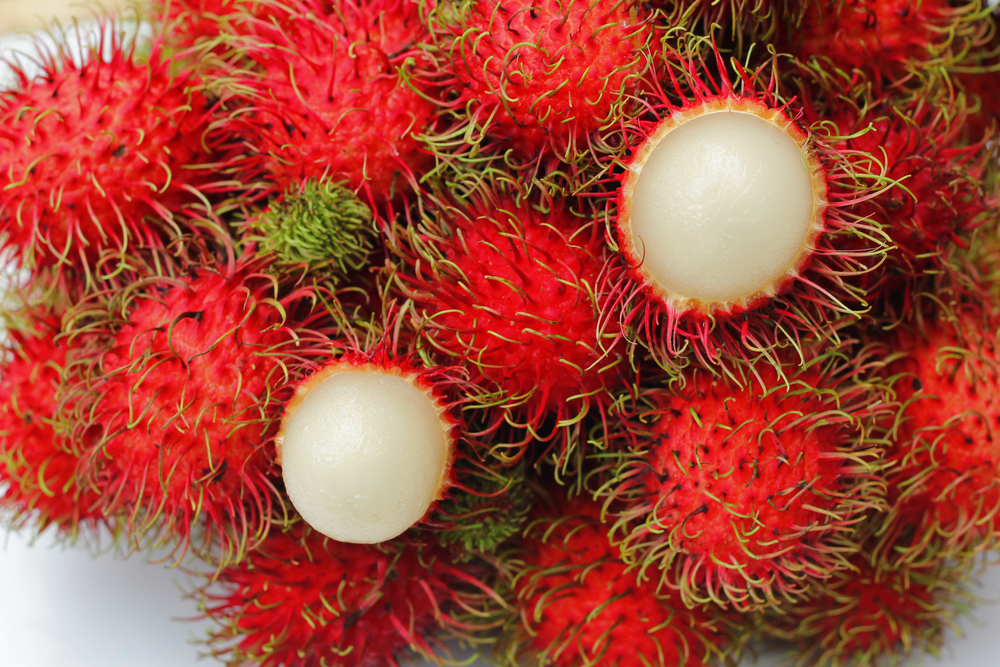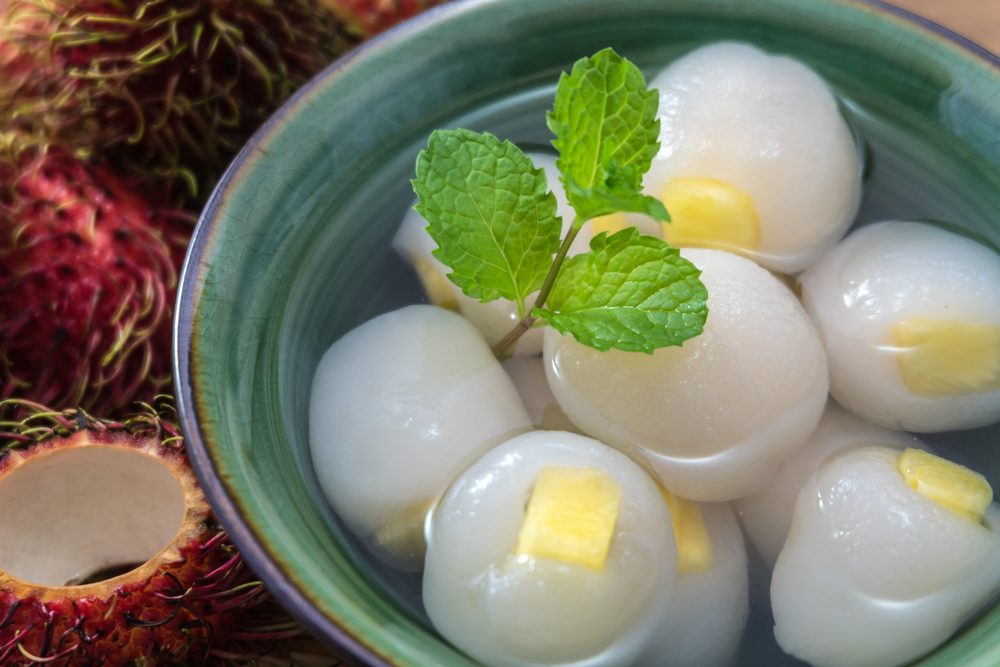Behold the rambutan, a hairy red fruit that looks more like something out of an imaginary world than anything grown in real life.
Native to tropical Southeast Asia, rambutan is commonly grown in various countries throughout the region, including Indonesia. The name rambutan is derived from the Malay-Indonesian languages word for rambut or ‘hair’, a reference to the numerous hairy protuberances of the fruit. The rambutan tree usually grows up to about 80 feet in height and thrives in tropical climates.

The spiky red skin contains edible, translucent fruit with a sweet-tart flavor. The texture resembles lychee—that’s why rambutan is also known as the hairy lychee. Some varieties have soft texture and juicy flesh, while there are also varieties that have drier texture. Regardless of the cultivars, the structure internally is quite similar, with a single central inedible seed and edible white flesh wrapped around it.
When talking about flavor, some people say that rambutan tastes blander and denser than lychee. Some say that they taste similar; other claim that rambutan tastes sweeter. Nevertheless, both of these fruits exude a sweet aroma and an even sweeter taste.
You can easily peel open a rambutan by splitting the skin apart with your nails and spreading it back, much as you would peel an orange. You can also cut the peel with knife and spread it open. Don’t worry about the spines, they are quite soft and won’t hurt your hands. In some varieties, the flesh comes off the seed easily while in others it sticks to the stone.
Rambutan is usually eaten plain as a snack, though they are also delicious to be mixed with other fruits in salad or as a dessert. Some people also love to sprinkle rambutans with a liqueur and serve them with a scoop of vanilla ice cream. In Indonesia, rambutan is also usually mixed in pudding or fruit cocktails.
Rambutans are delicate and don’t keep longer than one or two days at room temperature. To preserve a few days longer, wrap them in a breathable plastic bag and refrigerate (although this could make rambutan quickly lose their aroma). The fruit is beautiful when just picked and exceptionally delicious the first few hours after picking.
The fruit is in season from November through February. In Indonesia, 22 rambutan cultivars were identified with good quality, with five as leading commercial cultivars: Binjai, Lebak Bulus, Cimacan, Sinyonya, and Rapiah. The latter one, which is yellowish with short hair, is most prized and tastiest among the others.

Rambutan can be purchased fresh when in season, and other times canned or dried. To make them tastier, some canned rambutan comes with a small triangle of pineapple stuffed in its center. However some find it doesn’t taste that good as the rambutans were picked before ripening.




